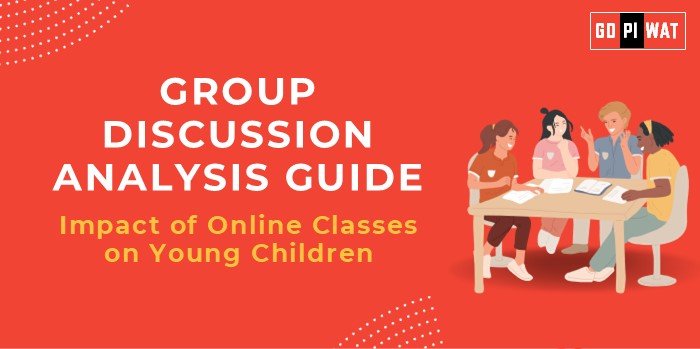📋 GD Analysis: Impact of Online Classes on Young Children
🌐 Introduction to the Impact of Online Classes on Young Children
📖 The COVID-19 pandemic shifted educational paradigms globally, leading to the widespread adoption of online classes for young children. This shift has raised critical questions about the developmental, social, and psychological effects of online learning on children.
Initially adopted as a temporary solution, online classes have become a core part of the education system, sparking debate on their long-term impact on cognitive and social skills among young learners.
📊 Quick Facts and Key Statistics
- 📈 Screen Time Increase: Children’s daily screen time nearly doubled from 3.8 hours to 7.7 hours during the pandemic, with the trend continuing in online learning.
- 🧠 Attention Issues: Prolonged screen use has been linked to increased attention deficit symptoms and behavioral challenges.
- 🏃♂️ Reduced Physical Activity: Online learning decreases physical activity, impacting motor skill development and physical health.
- 🤝 Social Development: Reduced face-to-face interaction has led to challenges in social skills and emotional regulation.
- 🌙 Sleep Disruption: Excessive screen time disrupts sleep patterns, affecting mood and cognitive learning outcomes.
🤝 Stakeholders and Their Roles
- 🏫 Educational Institutions: Design age-appropriate online curriculums for young learners.
- 👨👩👧👦 Parents: Supervise daily lessons and provide support, often requiring additional time and resources.
- 🏛️ Governments and Policymakers: Develop guidelines to ensure safe, developmentally appropriate online learning platforms.
- 🩺 Health Professionals: Advise on safe screen time limits and monitor physical and mental health impacts.
- 💻 Tech Companies: Create engaging and safe platforms tailored for young children.
🎯 Achievements and Challenges
🌟 Achievements:
- 📅 Flexibility: Online learning allows children to learn at their own pace.
- 📚 Access to Resources: Digital platforms provide diverse resources supporting various learning styles.
- 👨👩👧 Parental Insight: Parents are more involved in their children’s education through online learning.
⚠️ Challenges:
- 🤝 Social Development: Limited in-person interaction affects children’s social skills.
- 🧠 Attention Span: Extended screen exposure challenges focus and learning efficacy.
- 🏋️♀️ Physical Health: Sedentary behavior contributes to physical health issues like weakened motor skills.
🌍 Global Comparisons
- 🇫🇮 Finland: Limits screen time and emphasizes physical activity for young children.
- 🇰🇷 South Korea: Implements balanced approaches to prevent cognitive overload in early education.
📖 Case Study:
Kerala, India: The “First Bell” program supports structured online learning, supplemented with community resources for young children.
📄 Structured Arguments for Discussion
🔹 Supporting Stance: “Online classes offer a flexible learning environment, accommodating different paces and reducing pressure on young children.”
🔹 Opposing Stance: “Young children experience developmental setbacks in online-only environments, which lack essential social interaction and physical activity.”
🔹 Balanced Perspective: “While online classes provide flexibility, they must be complemented by in-person interactions and physical activities for holistic development.”
📊 Effective Discussion Approaches
- 📈 Start with Data: “Studies show screen time for young children nearly doubled during the pandemic, raising developmental concerns.”
- 🔗 Real-World Comparison: “Countries like Finland limit screen time, prioritizing physical activity and social interaction.”
- ⚖️ Counter-Argument Handling: Acknowledge the benefits of flexibility and access to resources, while stressing the importance of regulating screen time and incorporating physical activities.
💡 Strategic Analysis
Strengths:
- 📅 Flexible schedules accommodating family needs.
- 📚 Access to diverse learning materials.
Weaknesses:
- 🤝 Lack of peer social interaction.
- 🖥️ Increased screen time impacting physical and cognitive health.
Opportunities:
- 🔗 Development of hybrid models blending online and in-person learning.
Threats:
- 📉 Risk of widening the digital divide.
- 🧠 Cognitive strain from extended screen use.
📚 Connecting with B-School Applications
- 💼 Real-World Applications: Explore innovations in educational technology for young learners.
- 🎓 Sample Interview Questions:
- “What are the long-term implications of online learning on children’s social skills?”
- “How can ed-tech companies make online classes more engaging for young children?”
- 💡 Insights: Highlights opportunities in ed-tech and child psychology while emphasizing the need to balance technology with developmentally appropriate methods.


